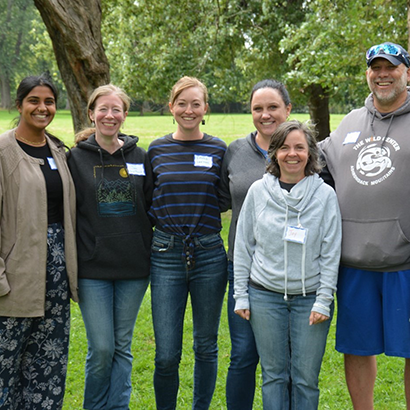
At Houghton Park in upstate New York, a trail overlook provides a stunning view of the Niagara River. The surrounding greenery is lush and overgrown, reaching onto the trail, so walking through is an exercise in ducking branches and dodging black walnuts. The neighborhood around the area is full of residents with deep roots, who love Buffalo and love their park—even though some areas were formerly treated as sites for dumping debris.
In partnership with the City of Buffalo and the Buffalo Niagara River Land Trust (BNRLT), residents invested in Houghton Park have been able to determine what they want their park to become. One fundamental piece of that work was the removal of debris like big concrete slabs and rusted metal from the green space. Before receiving a park improvement grant from The Bobcat Company, community members removed the trash they could on their own—routinely bringing vehicles into the park and leaving with mattresses, tires, and other liftable debris.
However, with backing from the partnership between Bobcat and NRPA, community members have been able to rely on BNRLT and Bobcat of Buffalo to facilitate the removal of dangerous and heavy debris. Through the life of this grant, BNRLT received $50,000 and in-kind assistance from Bobcat of Buffalo. Other grantees include the City of Stonecrest, Georgia, the City of Auburn, Washington, San Antonio River Authority, Texas, and Davidson County, North Carolina. Each of these park agencies, along with community partners, completed a project that benefits both park users and the environment.
NRPA, BNLRT and Bobcat of Buffalo have built relationships that changed the project's scope for the better. At Bobcat of Buffalo’s first visit to the site, pictured below, conversation between invested community members, equipment experts and land stewards led to the realization that the project would have to take place just after the worst of winter. Invasive Japanese knotweed had taken hold of the site and was very difficult to remove. Waiting until severe cold killed the knotweed of its own accord meant that challenge was remedied without a dollar spent or finger lifted.

NRPA was able to visit the site in September of 2023, when the knotweed was overgrown, and no work had been completed yet. In conversations at BNLRT’s Nature Inspiration Day, it was evident that neighbors used the park as it was, while planning for future expanded opportunities. People brought their kids out to play on their basketball court, ran baseball leagues, and found joy in the changing colors of the leaves.
The new and improved park— with much less dangerous debris—will open even more green space to the community. Continuous opportunities for community visioning, present at the Nature Inspiration Day as well, will inform what the park will become over the next 5 to 10 years. “Build it, and they will come,” states one of the vision documents. Sarah Sutcliff, invested resident, says “Kaisertown is so happy and grateful to see our beloved Houghton Park renovated.”
This type of public-private partnership has a long tradition in communities coming together for local parks across the country. Invite representatives from your local businesses out to walk in your park and share community driven plans for the space. There is value from in-kind donations, shared expertise, and you may discover a fellow park enthusiast. If you are interested in learning more about shared community solutions and environmental resilience, check out our Sustainability in Practice cohort.
Rukmini Kalamangalam (she/her) is a program specialist at NRPA.


